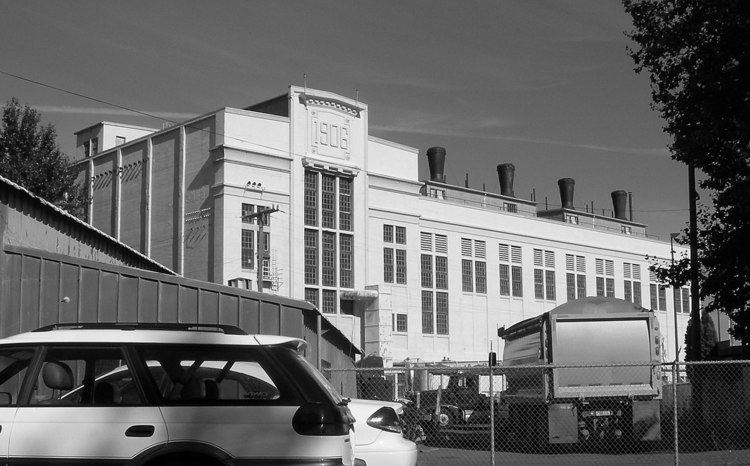Location Seattle, Washington Architectural style Classical Revival Added to NRHP August 1, 1978 Opened 1906 | Built 1906 NRHP Reference # 78002755 Area 2 ha Phone +1 206-763-2542 | |
 | ||
Architect Stone & Webster Engineering; Frank B. Gilbreth Address 6605 13th Ave S, Seattle, WA 98108, USA Hours Closed today SundayClosedMondayClosedTuesdayClosedWednesdayClosedThursdayClosedFridayClosedSaturday10AM–2AM Similar Museum of Communications, Coast Guard Museum, Naval Undersea Museum, Oxbow Park, History House of Greater S | ||
Citystream seattle s georgetown steam plant
The Georgetown Steam Plant, now the Georgetown PowerPlant Museum, located in the Georgetown neighborhood of Seattle, Washington, constructed in 1906 for the Seattle Electric Company, provided power for Seattle, notably for streetcars.
Contents
- Citystream seattle s georgetown steam plant
- Georgetown steam plant wmv
- History
- Landmark and museum
- References
Georgetown steam plant wmv
History
The plant was originally built by Stone and Webster in 1906. One of the first reinforced concrete structures on the U.S. West Coast, it originally provided power for the Interurban Railway between Seattle and Tacoma; it also provided both direct current for Seattle's streetcars and alternating current for Georgetown, then an independent city. They purchased General Electric steam turbine technology, based on patents originally held by inventor Charles Gordon Curtis. At the time, this was cutting edge technology, and the Georgetown Steam Plant "marks the beginning of the end of the reciprocating steam engine" as the dominant mode of generating electricity on a large scale.
Originally located along an oxbow of the Duwamish River to provide cooling water, the plant was left inland after the original river channel was straightened in 1917. Retired after nearly 75 years of operation, it remains "surprisingly complete and operable". The plant has three Curtis turbines, manufactured by the General Electric Company between 1906 and 1917.
Puget Sound Traction and Lighting Company (now Puget Sound Energy) bought the Seattle Electric Company in 1912; the Georgetown Steam Plant powered the Seattle-to-Tacoma Interurban and Seattle streetcars; it also provided residential and industrial power to Georgetown. Originally an oil-fired plant, it converted to a coal in 1917.
Landmark and museum
The building was declared a National Historic Landmark in 1984, and is also designated by the American Society of Mechanical Engineers as a National Historic Mechanical Engineering Landmark. At the time of its landmarking, it contained the "last operating examples of the world's first large scale, steam turbine". The building itself, "built by a fast-track construction process, was designed and supervised by Frank W. Gilbreth, later a nationally famous proponent of efficiency engineering." The building is also a Seattle City Landmark and is on the Washington State Register of Historic Places.
Paul Carosino and Lilly Tellefson founded the Georgetown PowerPlant Museum to restore, maintain and operate the plant. The group was officially founded April 25, 1995. Carosino and Tellefson initially served as joint executive directors; Tellefson took over the role after Carosino's death in 1996.
The plant remains owned by Seattle City Light, the city's public electric utility; they lease it to the museum. The museum operates an accredited School of Technology; it opens to the general public from 10am to 2pm on the second Saturday of each month. In the past it has hosted hobbyist "steam meets". Simultaneously with the steam meets, the Puget Sound Garden Railroad Society operated a miniature steam railroad on the grounds. The May steam meet was a picnic, with numerous temporary exhibits.
The plant houses the last operable examples of early vertical steam generating turbines, as well as reciprocating steam engines, which are also operational, a collection of vintage machining tools, and several smaller steam engines.
The plant was the site of the last performance of the rock band Big Black.
